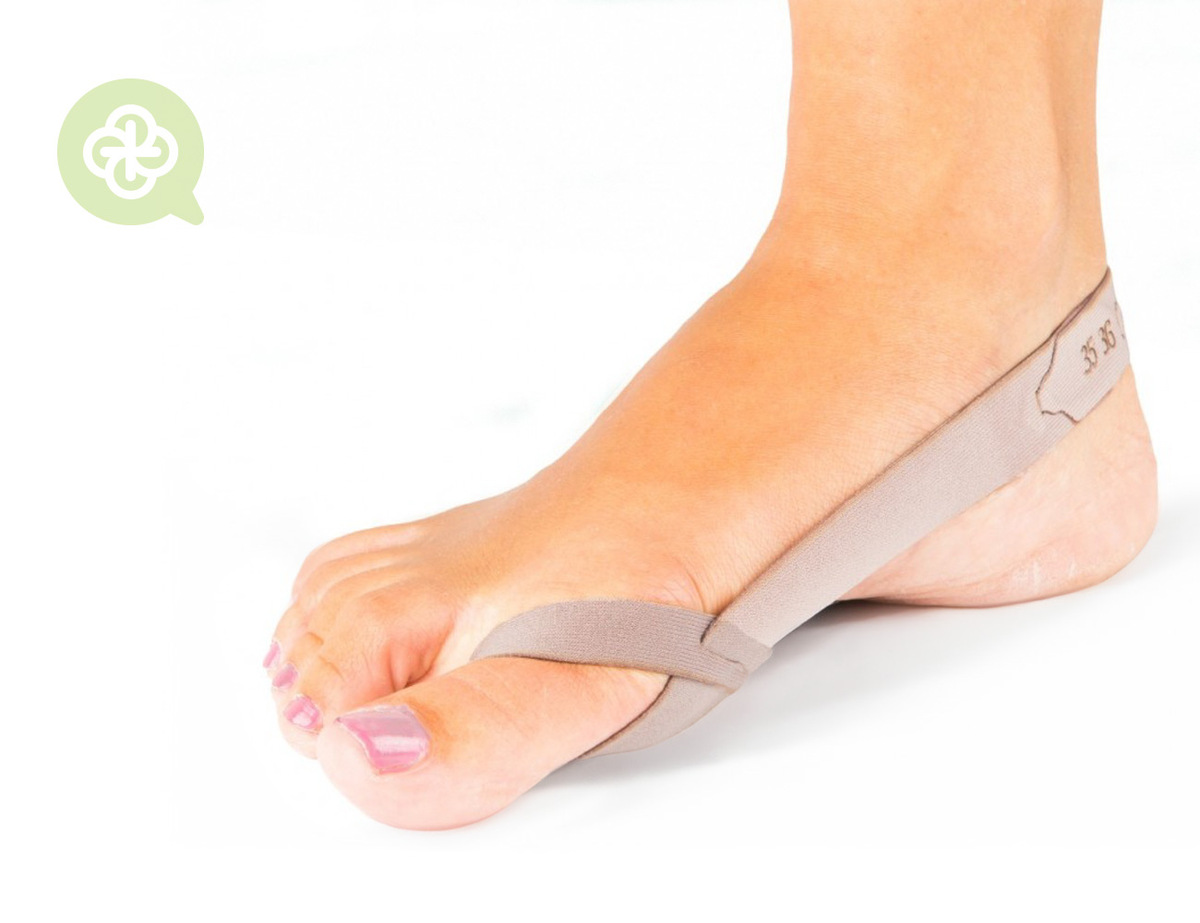
How does a bunion corrector work? Learn how to Prevent and Minimize Discomfort
NOTE: Article originally published on July 21, 2021. Updated September 14, 2023.
In our day-to-day lives, and although we often forget about them, our feet are extremely important. They support the weight of our body, enable our mobility and balance, and are crucial in allowing us some quality of life. But the truth is, we often neglect our feet until problems arise that demand our attention.
One of these common problems is bunions, a condition that impacts the lives of those who face it. Bunion, also known as Hallux Valgus, is the most recurring deformity of the foot. In these cases, a deviation in the positioning of the big toe (hallux) is observed, associated with rotation of this toe and the corresponding instep bone. This deformity can lead to pain and inflammation, sometimes very disabling.
If you frequently experience bunion pain, in this article, you can discover how to prevent and minimize the discomfort. Understand how a bunion corrector works and learn about the recommended footwear.
What are the causes of Hallux Valgus or Bunions?
The appearance of a bunion cannot be associated with a single cause. Typically, it’s the combination of various factors that initiates or accelerates the onset and worsening of bunions. Among the most common are issues related to foot biomechanics and genetic predisposition. Check all the factors that can contribute to the change in toe position:
✓ Genetic inheritance (hereditary);
✓ Poor joint alignment;
✓ Foot type or shape;
✓ Wearing inappropriate footwear (too tight, closed, pointed, and/or high-heeled);
✓ Trauma and previous injuries;
✓ Natural aging.
To identify the onset of bunions (Hallux Valgus), you can observe the following signs and symptoms:
Identifying the onset of bunions in the early stages is crucial to begin treatment early and prevent future complications. because bunions develop slowly, symptoms can go unnoticed in the initial stages, but being aware of warning signs is essential for effective intervention.
Similarly, the symptoms vary depending on the deviation of the toe and the progression of the bunion. However, it is possible to identify its development with the occurrence of:
✓ Pain while walking;
✓ Swelling of the toe joint;
✓ Deviation of the affected toe in relation to the other smaller toes;
✓ Change in the shape of the foot, with the formation of a bulge on the side of the foot;
✓ Dry and red (inflamed) skin in the affected area;
✓ Joint stiffness;
✓ Difficulty in finding comfortable footwear.
It’s important to be attentive to these signs and symptoms, especially if you have risk factors, such as a family history of bunions. If you identify any of these symptoms or suspect that you are developing a bunion, you should seek out a specialized Orthopedist in Feet and Ankles to ensure an accurate diagnosis. Through the observation of the foot, footwear, and gait, along with the support of X-rays, they can confirm the bone deformity and initiate treatment.
How is bunion treatment done?
Before starting the treatment process, it is extremely crucial to understand that hallux valgus is progressive and irreversible, so the focus should be on delaying its progression as much as possible and relieving symptoms. On the other hand, the treatment plan can vary depending on the severity of the deformity and the presented symptoms. Nevertheless, there is one solution that stands out when it comes to bunions: the bunion corrector.
HOW DOES THE JOINT CORRECTOR WORK?
Bunion correctors are orthopedic devices designed to realign the hallux and reduce pressure on the joint affected by a bunion. Their main function is, as the name suggests, to force the affected toe back into the correct position.
Typically designed to reposition the hallux, correctors consist of an elastic band that wraps around the forefoot and a toe separator or splint that exerts traction until the desired positioning is achieved.
When should I use a bunion corrector?
Bunion correctors can be effective in various situations, but it’s important to emphasize that the appropriate timing to use them may vary according to individual needs. Therefore, do not forgo advice from an Orthopedist.
If you have identified the symptoms of bunion onset, here are some situations in which you should consider using a bunion corrector:
✓ In the early stages of bunion onset;
✓ For pain and discomfort relief;
✓ As a complement to treatment;
✓ As a prevention measure for worsening;
✓ After surgery.
In the post-operative period, bunion correctors also have an increased role. While these products allow for preventing and controlling the advancement of the bunion, they are valuable aids during the recovery process. This is because they help maintain the toe realignment achieved in surgery, preventing bunion recurrence.
In these cases, it may also be advisable to use a Post-Surgery Shoe with a Heel, which allows for better adaptation and protection for feet with deformities or post-surgical connections. The heel relieves pressure on the toes and forefoot, aiding in a healthy and comfortable recovery.
Bunion Corrector Night and Day: Which One Is Better?
When considering the use of a bunion corrector, the question of whether to choose a nighttime or daytime model quickly arises. The truth is that the choice of a corrector model should be made according to your individual needs. Both have their benefits, so we’ve provided some tips to assist in the decision.
Bunion corrector for daytime use.
In the case of daytime use, it’s important to assess the type of footwear before choosing a bunion corrector. It’s crucial that the footwear comfortably accommodates both the foot and the volume of the bunion corrector. However, this does not mean that a concealer cannot be worn during the summer, with open shoes or sandals, in an equally aesthetic way. That’s why daytime bunion correctors tend to be more flexible and discreet than nighttime ones, allowing you to comfortably carry out all daily activities while relieving uncomfortable pressure.

Juzo Hallux-Valgus Tape Loops Corrector
The Juzo Hallux-Valgus Tape Loops Corrector is effective and innovative. Designed with non-adhesive and skin-friendly elastic bands, they help prevent the development or address bunions. The loops gently reposition the hallux (big toe) back to its normal position, promoting a reduction in pain while you go about your daily activities. Very practical and easy to use, it allows you to enjoy maximum comfort throughout the day.
Bunion Corrector for Nighttime Use
On the other hand, nighttime bunion correctors are designed to be worn during sleep. In this way, it can promote the gradual realignment of the toe, relieving pressure on the joint while you sleep. They are especially relevant for slowing the progression of the bunion, allowing for a passive approach to treatment.
For nighttime treatment, the Thermoplastic Hallux-Valgus Night Corrector can be an excellent option. Comprised of an abductor splint that regulates the position of the first toe, it allows for the gradual alignment of soft tissues and joints while you sleep.
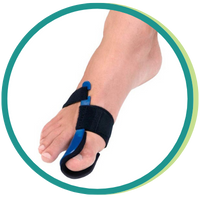
Thermoplastic Hallux-Valgus Night Corrector
Comprised of an abductor splint that regulates the position of the first toe, it allows for the gradual alignment of soft tissues and joints while you sleep.
Bunion-friendly footwear
One of the key elements for bunion treatment – and equally important for treatment effectiveness – is footwear adaptation. And the choice of comfortable, anatomical footwear models in the correct size is extremely essential.
When it comes to choosing footwear, there are some useful tips you can follow to minimize discomfort and worsening of the condition:
✓ Avoid wearing tight shoes, high heels, or narrow toe boxes. These can deform and force the normal position of the foot.
✓ Whenever possible, opt for open-toed sandals or other comfortable footwear that doesn’t cause friction on the inflamed area.
In the case of bunions, it is advisable to choose especially soft shoes. In this regard, the entire Stretch footwear line is recommended. As stretch footwear is expandable, the fabric can adapt and ‘mold’ to the morphological deformities of the foot, allowing for maximum comfort and fit. This line offers models for both men and women.
The choice between a nighttime and a daytime bunion corrector depends on personal preference and individual needs. Some patients choose to use both to comprehensively address bunions, taking advantage of the benefits of each type. However, it’s always important to discuss the options with an orthopedist and tailor the treatment to your specific needs.
If these solutions are no longer sufficient or effective in relieving the pain, surgical intervention may be necessary. This surgery is indicated for situations in which the discomfort and pain are accentuated, and not only for aesthetic cases, without symptoms.
Preventing and Minimizing Discomfort: Other Care Tips
In addition to bunion correctors and adapted footwear, there are other measures and devices that play an important role in preventing and relieving discomfort caused by bunions. Discover below what these are
Toe separator
Toe separators are excellent for assisting in proper alignment, preventing friction, and relieving pressure on the hallux joint.
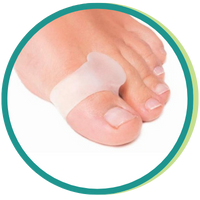
Gel Toe Separator with Ring
The Gel Toe Separator with Ring is an option that can be used with open or closed-toe footwear. Thus, it doesn’t limit the type of footwear you want to wear, allowing you to continue your treatment uninterrupted.
On the other hand, when the bunion is in a more advanced stage, toe overlap can occur. In these cases, it is advisable to use a Gel 5-Toe Separator or a 5-Toe Separator with Cushion to encourage toe separation and simultaneously support their alignment.
Bunion Protector
A bunion protector, whether it’s for the hallux or the fifth toe, will shield the bunion’s prominence, relieve pressure, reduce pain, and prevent friction on the bony protrusion. Made of gel with a medium compression pad, the Bunion Protector provides immediate relief from shoe pressure. Its anatomical cushion shape cushions and protects the bunion and forefoot area.
Bunion Insole
Orthopedic insoles for bunions are designed to alleviate the pain and discomfort caused by bunions, and promote comfort in the toe joints. These insoles are recommended for individuals with bunions or in post-surgery recovery. They are easy to use, even with narrower shoes, and the 4 layers of high-quality materials provide additional freshness and comfort to painful joints.

As we explore bunions and the available options to prevent and minimize their discomfort, it becomes clear that taking care of foot health is an essential choice. Bunions, in particular, can impact quality of life and mobility. However, with the right interventions, it is possible to take proactive measures to prevent and effectively treat them.
From bunion correctors to bunion protectors and specific orthopedic insoles, the solutions are diverse and adaptable to each individual’s needs. Always remember that early detection, consultation with an orthopedist, and adherence to medical advice are essential for achieving more effective results.
With firm and comfortable steps, you can enjoy each day with comfort, safety, and health. Take care of your feet, take care of yourself!
At your Orthopedic Store, you’ll find the best solutions for preventing and treating bunions, providing all the care your feet deserve. Live your day-to-day actively and face challenges with confidence!
Always consult with a healthcare professional to find the solution that best suits your needs. If you have any questions, contact us through our Customer Support or on our social media channels.
We know and have what you need!



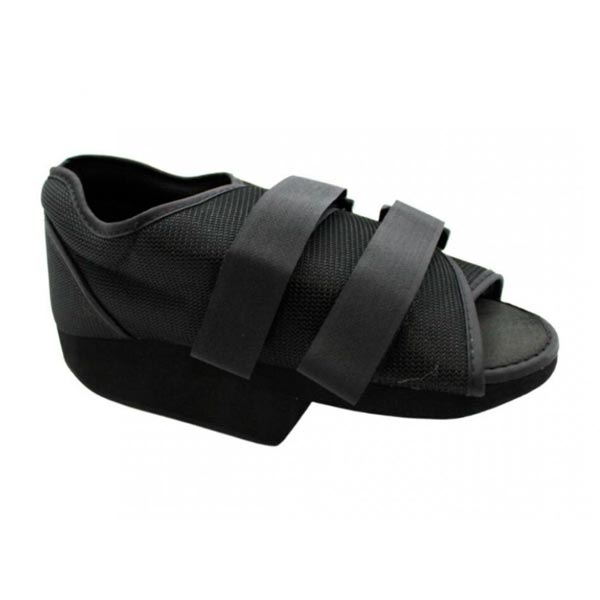

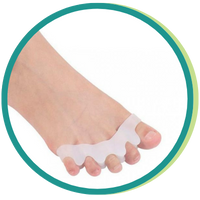
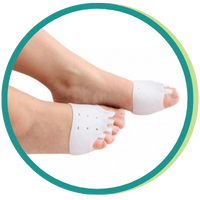
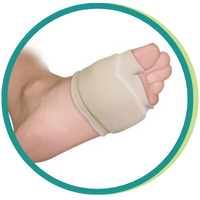

No Comments